The Honest AI Artist
Even with over 800,000 followers, the creator of The Archive In Between isn't sure about being an "AI Artist"
GENERATING DISTANT WORLDS WITH THE ARCHIVE IN BETWEEN
Great art is a great story. This week, we’re chatting with the author of The Archive In Between, a science fiction anthology that publishes stories across TikTok, Substack, and Patreon. Viewers of the Archive’s short videos might know this artist as the Head Curator, but anonymity was a condition of our conversation because, unlike previous artists we’ve interviewed, the Curator’s stories are furnished with AI-generated imagery.
I’m sure every reader of this newsletter has an opinion on AI art, but I reached out to the Head Curator because I wanted to understand their success. With over 500,000 followers on Instagram and 300,000 on TikTok, they have an audience most artists would envy. While the current AI discourse runs pretty negatively, I think artists need to reckon with the fact that these tools are here to stay.
While neither of us solved the AI culture war during our conversation, the Head Curator did surprise me. They didn’t consider their AI images to be art. The real art, they believed, was their writing: the thing they made by hand. I really appreciated the candor of this interview, and I think you will too. Read on to learn how the Curator turned The Archive In Between into their day job, and click on the images to visit their website.
So my understanding of The Archive In Between is that it is a multimedia project that deals with science fiction, horror, fantasy, all tied together in a loosely interconnected universe.
You hit the nail on the head there. If I were to introduce it in character, I would say that the Archive has finally found a way to transmit to this universe. We have all these stories, and we're excited to share them with you. Outside of character, I would introduce it as a science fiction, fantasy, speculative fiction storytelling project that utilizes AI to provide a visual element for stories that I don't feel have been explored fully yet.
If you want to get into the nitty gritty of what I was thinking when I started it, I had all these little stories written down, and I did not want to box myself into one genre. So I had to create a narrative structure that would allow for all of those stories to exist without feeling completely disorganized. Then the idea came to me that, “Hey, what if there was this library that sat in the middle of all these universes?”
Tell me a little bit about your personal history with the project. When did it start, and how has it changed since then?
It's been about two and a half years now. Outside of this, I’m a professional illustrator and freelance designer. I worked for an apparel company in Southern California for like half a year. Before that, I did four years at a digital marketing agency and hated my life, and quit to pursue an artistic path. I had decent success with illustration, and then a couple of years ago, all the AI imagery stuff started rolling around.
It was a novelty. Everybody was making those awful little images of, like, Will Smith eating spaghetti, and it looked all screwed up because it was a computer hallucinating. It was such a joke. And then all of a sudden it wasn't. The first iterations of Stable Diffusion and Midjourney came out, and all of a sudden it was like, “Whoa, this is really happening.” I don't think anybody anticipated it outside of maybe the folks that were doing the research.
It caught me by surprise. I thought this could be an existential threat, as an illustrator. But I wouldn't be doing my job as an artist or as an entrepreneur if I didn't investigate this technology before I cast judgment upon it. Maybe I'll even find a way to make it work for myself.
You can fear new things, but you can also see the opportunity in them, and that was the route that I chose to take. I started playing around with Stable Diffusion 1.5, which was, in retrospect, a really crummy image generation model. I realized pretty quickly that this isn't going to take my job anytime soon. AI imagery relies on a client knowing exactly what they want and knowing exactly how to articulate it. And every illustrator you'll ever meet can tell you that that is the one thing clients are not good at. There's a reason projects take so long.
Everybody at that time was using it for a novelty, and I realized nobody was using it to aid in storytelling. I decided that there might be an opportunity for me to use this to make images for my stories, to make them more engaging without spending hours and hours of my time illustrating every single one. I can write a lot faster than I can draw.
TikTok is where I first started posting because I thought it was a better platform at the time. My very first story used Stable Diffusion to generate these images that looked like old 50s-style retro posters. Then I went into Photoshop and added captions to these posters, and it was a series about aliens coming to Earth through the lens of propaganda posters. The first two posters said not to trust these things, like “Vote against the first contact authorization act, don't engage.” Then the next two said, “They're here to help: let them help us.” It told a very short story in a very small amount of words.
Do you write everything by yourself, or is AI involved in the writing?
The writing is 100% human-done. I write every word myself. I will say though, ChatGPT is the best thesaurus in the entire world. That is the extent of my use of AI in the writing.
After you write a script, is there a timeline that you compose? Maybe it's got to get done within a week, or is it more like the schedule's open, something has to fill it?
I just have to post four stories a week. I have to post one long-form story per week. If I'm rocking it, I get those done a week in advance. The exception being if I'm going on vacation, and I want to schedule things while I'm out, I will lock myself in my office and not come out for five days straight, hammering these things out.
But I always start with the script, and then I create the images after that. I drop it all into a Google Slide. Then I pull it all into InDesign and do the actual design, make sure the text is aligned properly so it's sitting nicely within the image and it's not obscuring the subject of the image.
The carousel stories take me anywhere from two-and-a-half to five hours to make, and then the videos usually take me one to two hours. The videos are a lot quicker because there's less writing. When I read the carousel posts, they usually take three to five minutes to read. The other ones, the videos are usually less than a minute, so it's just much less writing. And the editing workflow on Premiere is a bit easier than what I do in InDesign.
I'm a video editor, so I hear that. It sounds like you use a few AI generators, which is your main tool?
Midjourney. I used Stable Diffusion for a really long time. It had this look that I really liked, but I stopped using it. Stable Diffusion is great if you have a really beefy computer that you can run it locally on, because you can get all these cool models. I don't have that beefy of a computer, nor do I want to take the time to learn the coding necessary to figure that out.
Stable Diffusion took a bit of a shit as a business. They didn't monetize. A lot of different reasons. They stopped maintaining their website. They stopped adding new models. It wasn't working for me anymore, so I moved over to Midjourney.
I have some other friends in, let’s call it the AI-assisted storytelling space, who are really good with Midjourney. It's been a huge, huge asset. I'm really happy I made the switch.
As you probably know, there's a cultural positioning with AI. People like it, people hate it. I have mixed feelings about it. I think the reason people take issue with it is because it plagiarizes by scraping artwork that's not yours. I think that's a valid concern.
You have, like, 500,000 followers on Instagram. Any artist would say you have succeeded in finding an audience. But I’ll tell you this: I spoke to three people who I'd call AI artists, like you.
Sure.
There's a million terms. I spoke to three. Three of them were game to talk. And then, after I said that we don’t share questions before the interview, those three flaked. It’s so interesting because if you're an artist, you're proud of your work, right? You should want to talk about it.
What do you think makes your art impactful to people? What's the special thing that you're delivering to them?
Yeah. One clarification that I want to make about how I see myself in this space. I refuse to speak for the rest of the people making this kind of content. I would never attach the title of “artist” to myself as it relates to the use of AI.
What I found interesting about you is that you specified that the prose is yours. Only the visuals are AI.
Yeah.
So why wouldn't you call yourself an artist when you're making arguably the more important part, which is the storytelling?
I would attach the title of “artist” to myself as it relates to the writing portion of it. The AI part of it… the creation of the image feels like an extension of the writing I'm already doing. I'm just speaking a slightly different language to a different audience, that audience being an AI.
I'm looking at a picture right now for the story that's coming out tomorrow. It’s a bunch of kittens sitting on a rug. I said, “Short film photo of several adorable kittens rolling around on a rug in the living room. Fantastic scene 80 sci-fi, blah blah blah.” But I made no conscious choice that this kitten is an orange tabby, a gray tabby, a tuxedo cat, and a black cat. I didn't choose what the rug looks like. I didn't choose what the interior of the living room looks like. There is a level of decision-making that is not happening.
When I use AI, I feel less like an artist and more like a curator. It's like I'm sifting through shit because there's a lot of it and and I'm picking out what looks passable and enhances the storytelling. I do think that the artistry comes across in the writing part of it. I don't personally feel like an artist when I generate an image. Other people will have other opinions about that, and that's perfectly fine.
What you're creating is akin to marketing, right? You're creating marketing for your Patreon, for your Substack. It sounds to me that your thought process is, How do I get people to look at the real product?
I was running into this issue where, as somebody who's trying to make a living doing this, I wasn't making any money when I didn't write a book. And even then, it was very dependent on the ebb and flow of social media. So I thought, One, I need to make a reliable income from people subscribing. Two, I need to get better at writing. I’d write these ten-panel stories, and people would ask what the hell happens next? I realized I was not fulfilling my desires as a storyteller because I wanted to flesh these stories out more, and wasn't giving the most important people, my audience, what they wanted.
I have big, big dreams for this. I have a vision for this that extends beyond posting stories on Instagram. I'm not going to get there if the business model isn't sustainable. I'm still finding the right balance because I don't want to box people out. I don't want the people who have been loyal readers, but for whatever reason can't afford it, to feel like they're left out. But I need to meet my needs, and I need to grow as a storyteller.
That's the dilemma of the freemium model, right? You reel them in with the free stuff, and then you say, “Hey, I want to give you more but you've got to pay for it.”
One of the reasons I wanted to talk to you is that we saw a lot of AI artists who have really large audiences, but no monetary ambition. You should want to get paid for your work. That's not a bad thing, I think.
Agreed.
But we noticed that the Archive was clearly trying to sell stories. Have you found success on Patreon and Substack?
I have, yeah. It has succeeded on every metric. The business is sustainable and primed to grow in the future. I am connecting with my audience members who wanted more with these deeper storytelling experiences.
And I'm getting more reps in. I was not a writer before this project at all. I've never taken a creative writing course. I never published anything. Writing was no big part of my work. I've always had an extremely active imagination, but I saw the potential for this to be good as both a creative and business endeavor. To get there, I had to get better at writing.
I want to follow up on this measurement of success. You have bigger plans. It sounds like you're hoping one day this is your job. I'm curious if you can measure your success in the future based on your performance right now.
Yeah, kind of hard to tell. One small correction I will make, though, is that this is currently my full-time thing.
It’s paying for itself at this point?
Oh yeah. I mean, I'm not making as much as I was when I worked in marketing. But I am steadily climbing back towards that. I see enough potential in this that I have been willing to tell my freelance illustration clients, “Look, sorry, I'm not doing this anymore.” The exception being for close friends or people who want to pay me, like, a lot of money.
This is my full-time job. It’s grown reliably, and I don't see that stopping. You know, you're the first person to interview me. When I saw your message, I was like, oh, wow, we're there.
It would be arrogant of me to say that I know exactly where it's going because I don't. I have an idea of where I'd like it to go, but I certainly don't see myself stopping anytime soon. I've already proven to myself and my bank account that this is worth doing.
Where are you finding the most success?
Patreon. Purely by the fact that it's more familiar to most people than Substack right now. I was a little late to the Substack game.
Behind that is direct sales. I sell collected volumes of these short stories and expanded versions in these books. It's been e-book sales on my website. Or I use Amazon as a print publisher because people really want paperbacks.
What are some resources that you would recommend to anybody starting out as an artist?
I'm going to try to answer this from a few different angles. If we're talking just general-art-learning YouTube is the best thing. YouTube and Reddit. You can learn almost anything you want using those two platforms.
When it comes to Midjourney specifically, there's a feature called SREF Codes. The minute I learned to use those was the minute I figured out how to use Midjourney.
When it comes to the writing… I truly think that your best resource is your own lived experience. And also time spent in nature, in a place without cell reception, where the mind is free to run and is allowed to do so.
People ask me, “Where do you find inspiration?” It's always a hard question to answer because it comes from anywhere. Learning how to look at what's in front of you, even if it's just outside your front door, and twisting it from a slightly different perspective, is invaluable.
You’ve succeeded where a lot of others haven't, where a lot of people have tried and failed. To what do you attribute your success?
I think it's 50% luck in timing and 50% my perspective. I was really lucky to be one of the first people that did it. The space is saturated now. I think I was lucky enough to recognize the opportunity. I remember sitting in my garden, and I felt like I got hit by a lightning bolt when I thought, “This is it.” I knew it was going to be successful before I even started, because of the time and the place, and because every time there's a new technology or medium, there are people who learn how to use it first.
On the other hand, I think I'm a decent writer. I'm a good writer. But more than that, I have an extremely active imagination. I never lost that little kid in me who was trying to play make-believe. He slept for a while, but he was always there.
I meant to say this earlier when we were talking about calling yourself an artist. While I stand by not really viewing myself as an artist for creating AI imagery, I would be remiss not to mention that one of the reasons I've been able to create pretty compelling imagery is because I have an informed background as an artist. I know the language.
If I want to create an image that looks like it came from an 80’s sci-fi movie, I know how to describe that. If I'm trying to create a certain art style, I know how to describe it because I have a creative background. I have the vocabulary for it. So if I'm being generous with myself, it's 50% me, 50% circumstantial luck. ⬤
Portions of this transcript have been edited for clarity.
Find more of The Archive In Between on Instagram, Tiktok, and their website.
If you’d like The Daily Egg to showcase your work in a newsletter, reach out to us! You can fill out the Artist Highlight form here, or email/DM us for more information.




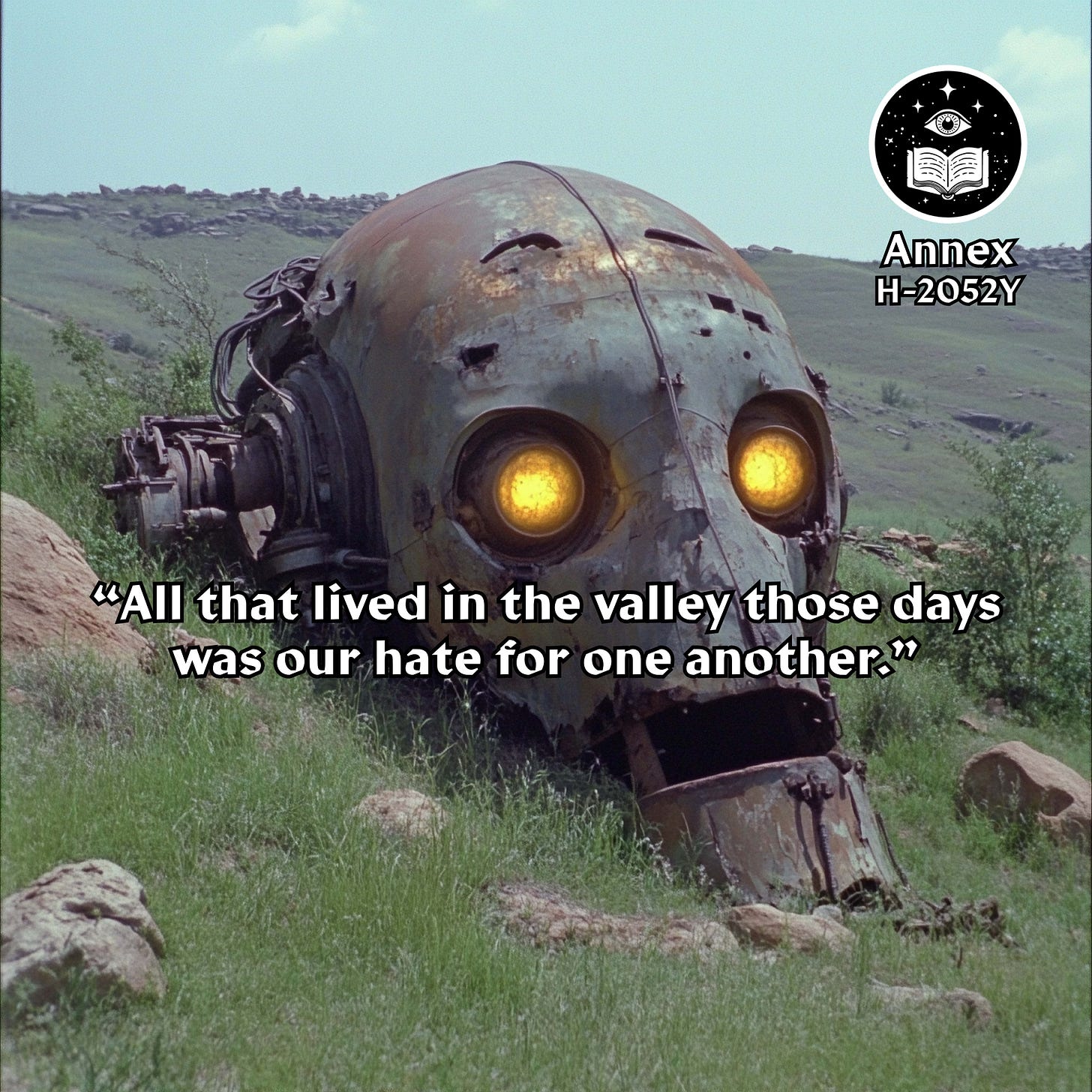
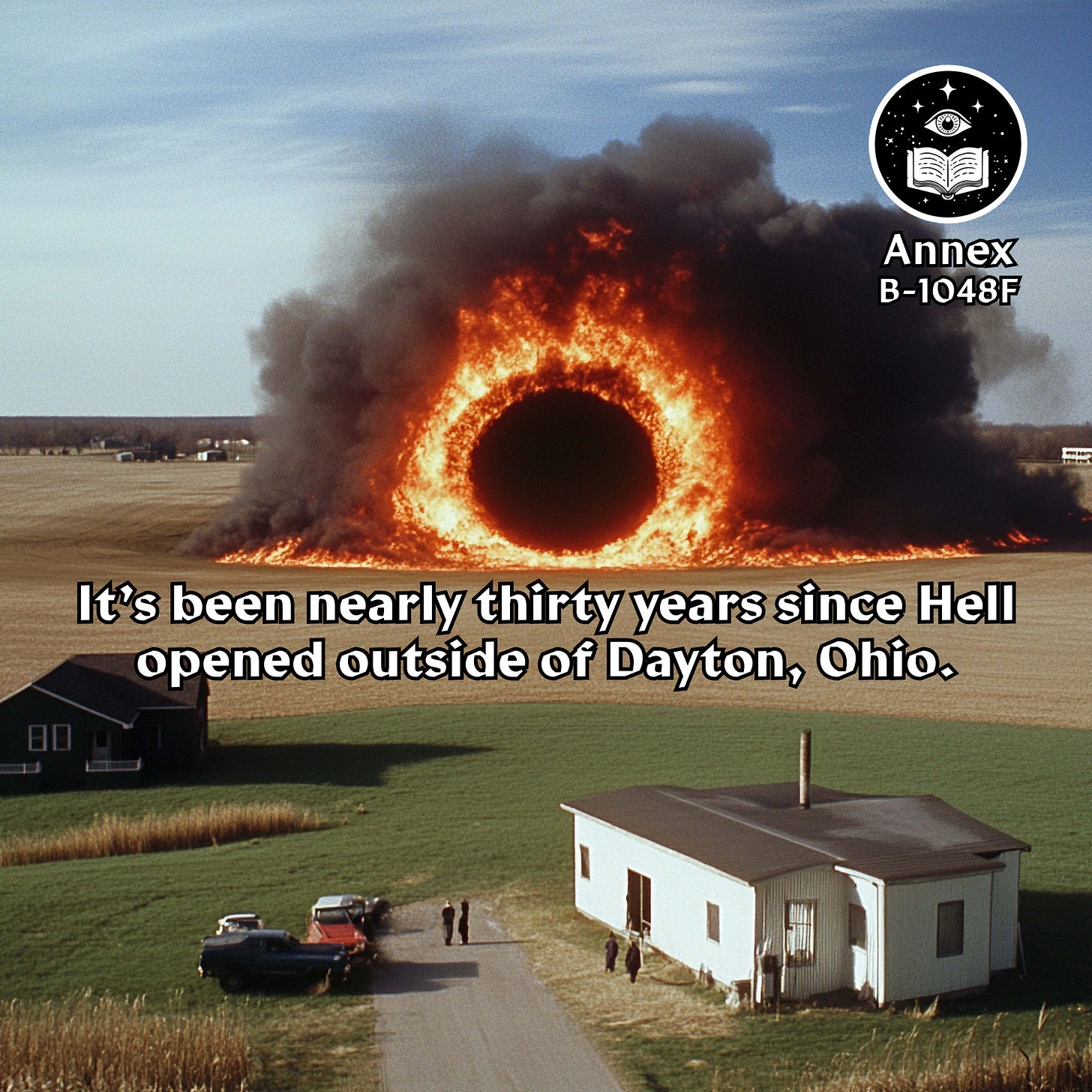
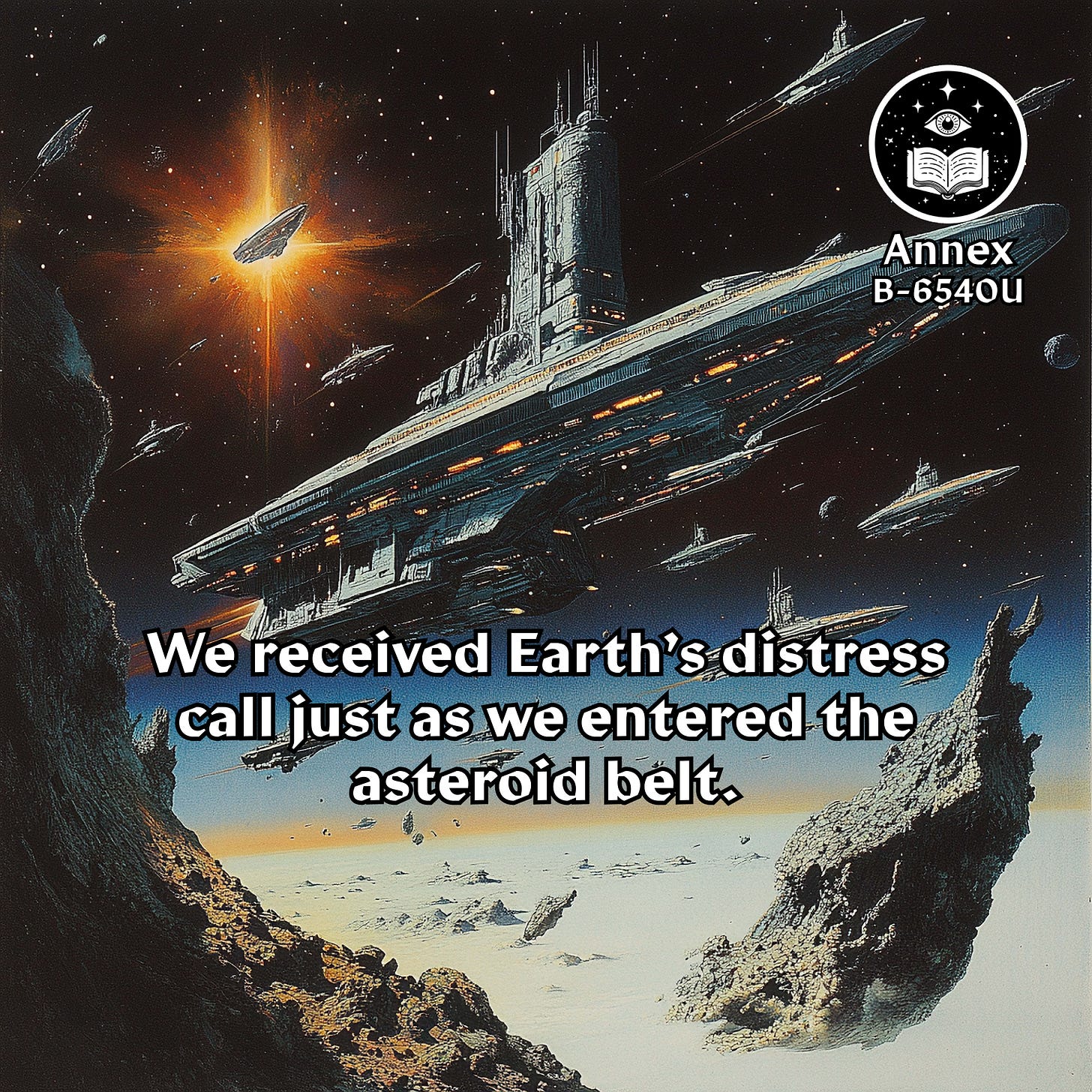
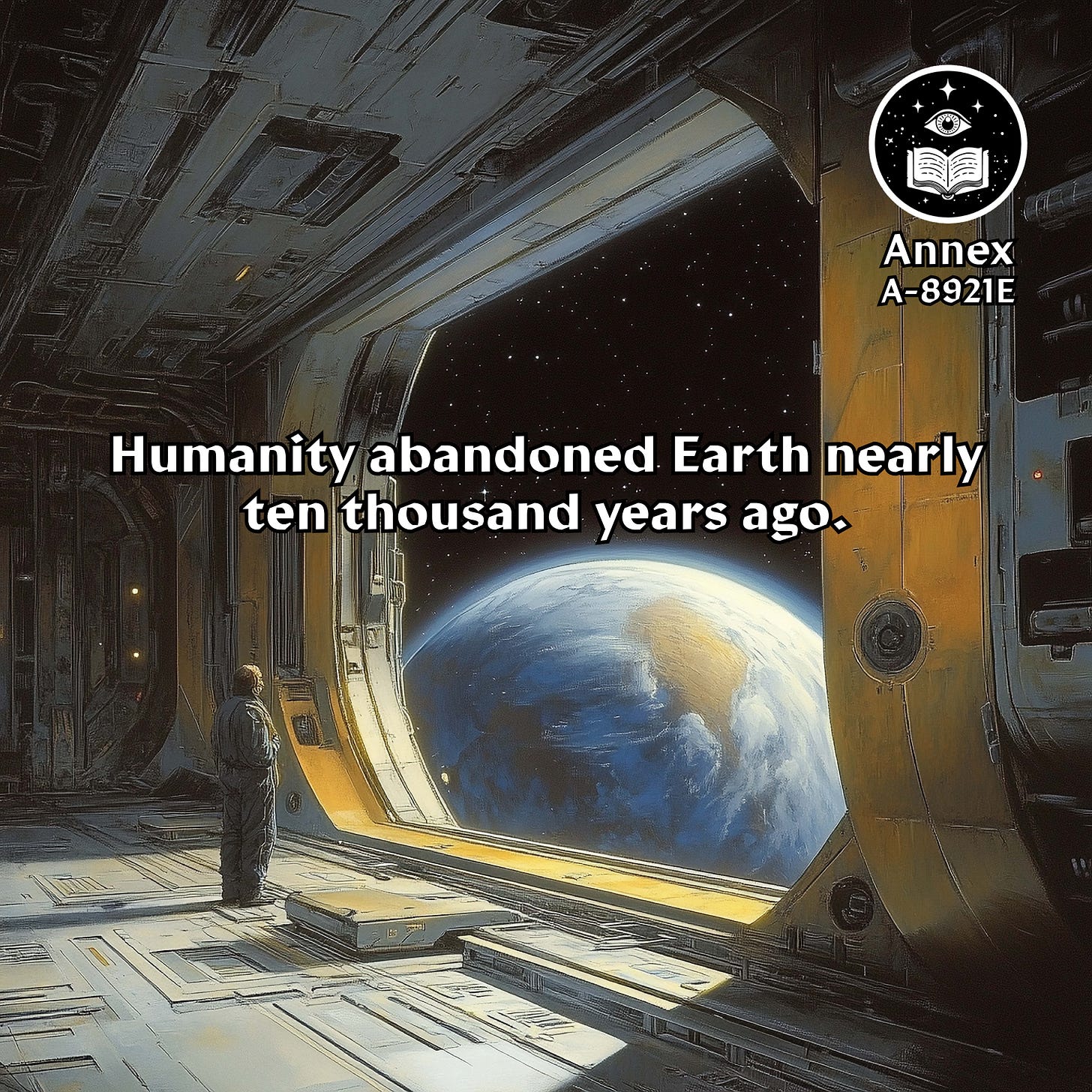
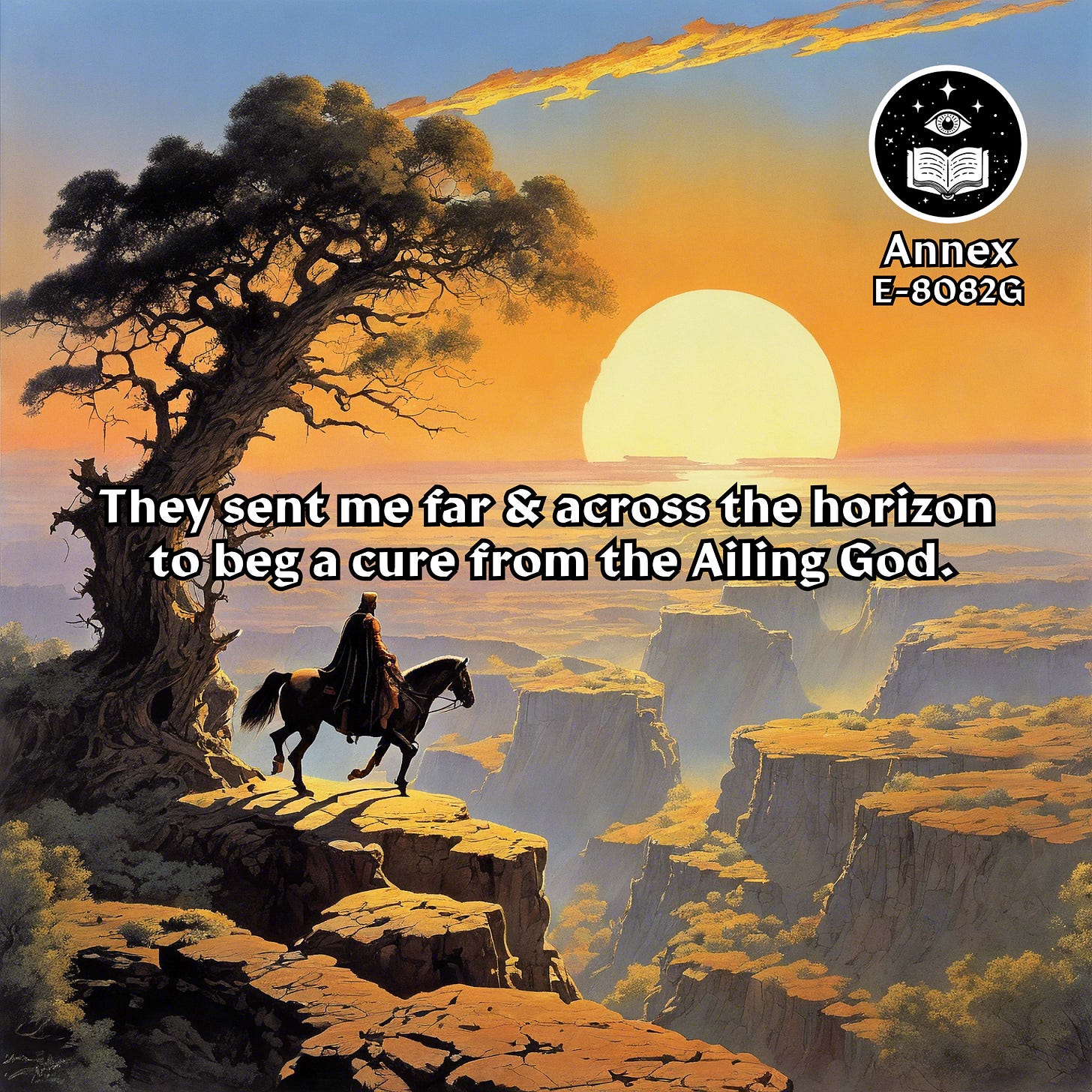
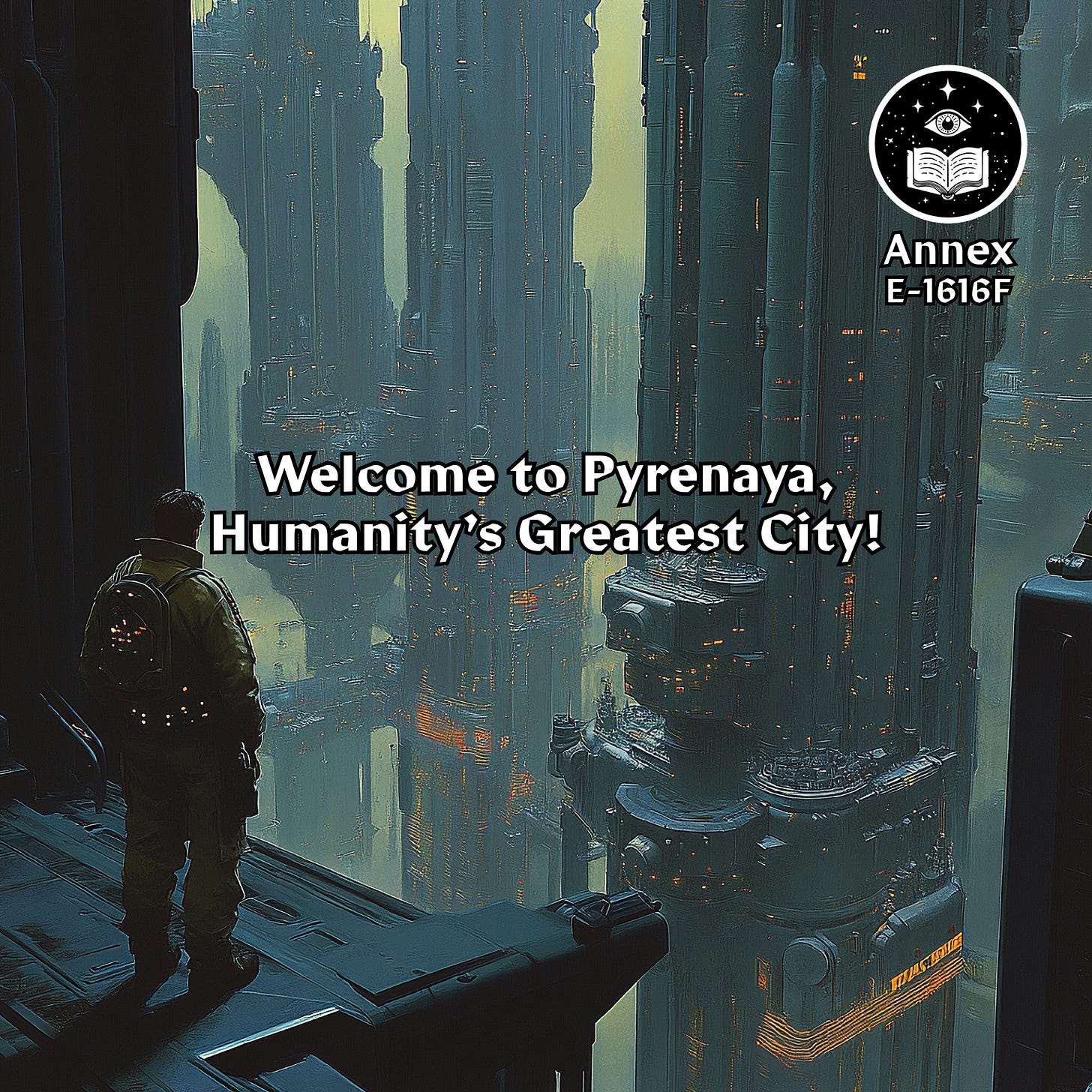
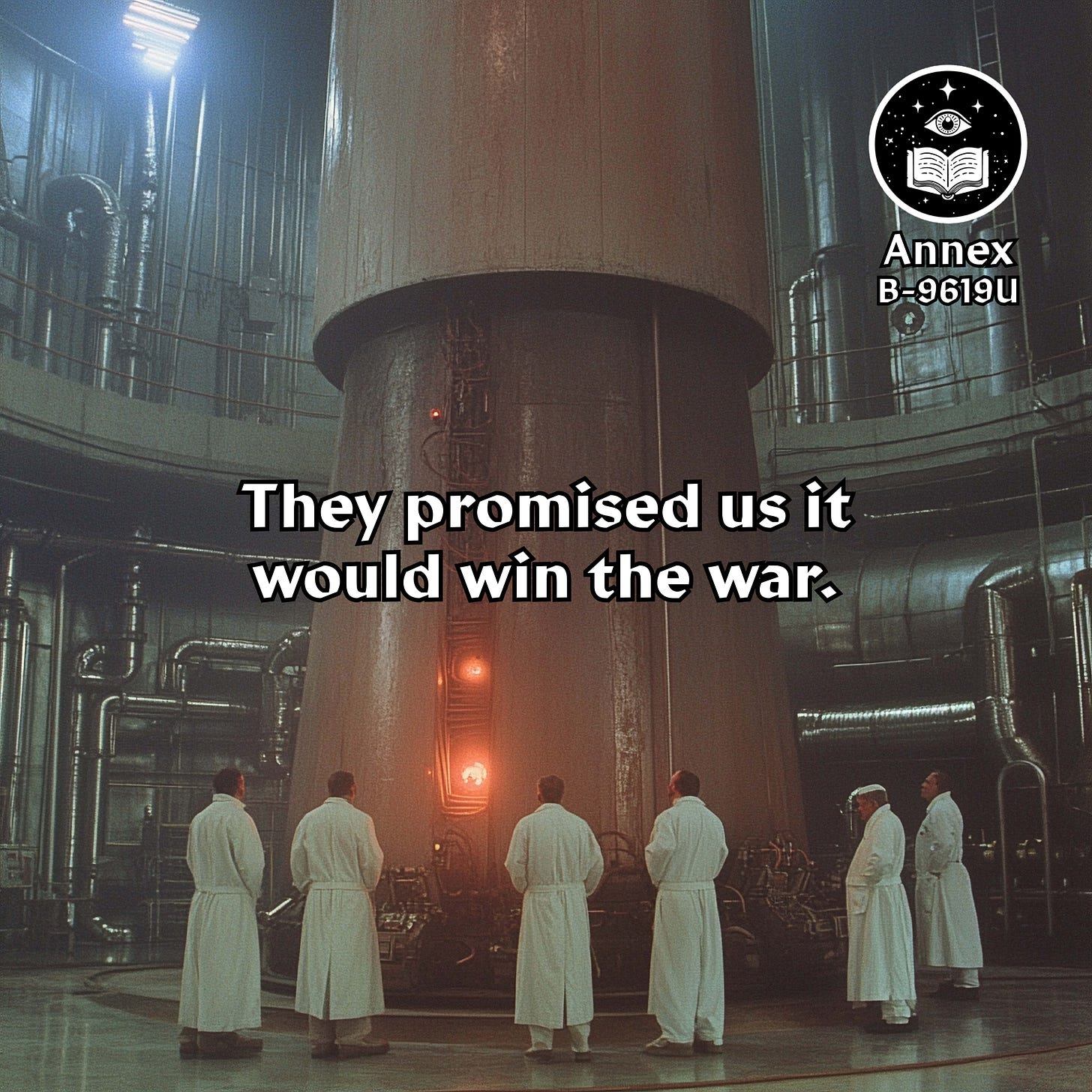
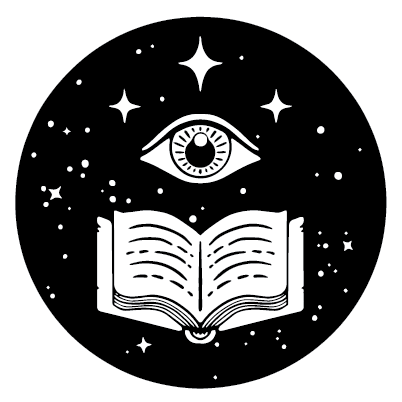
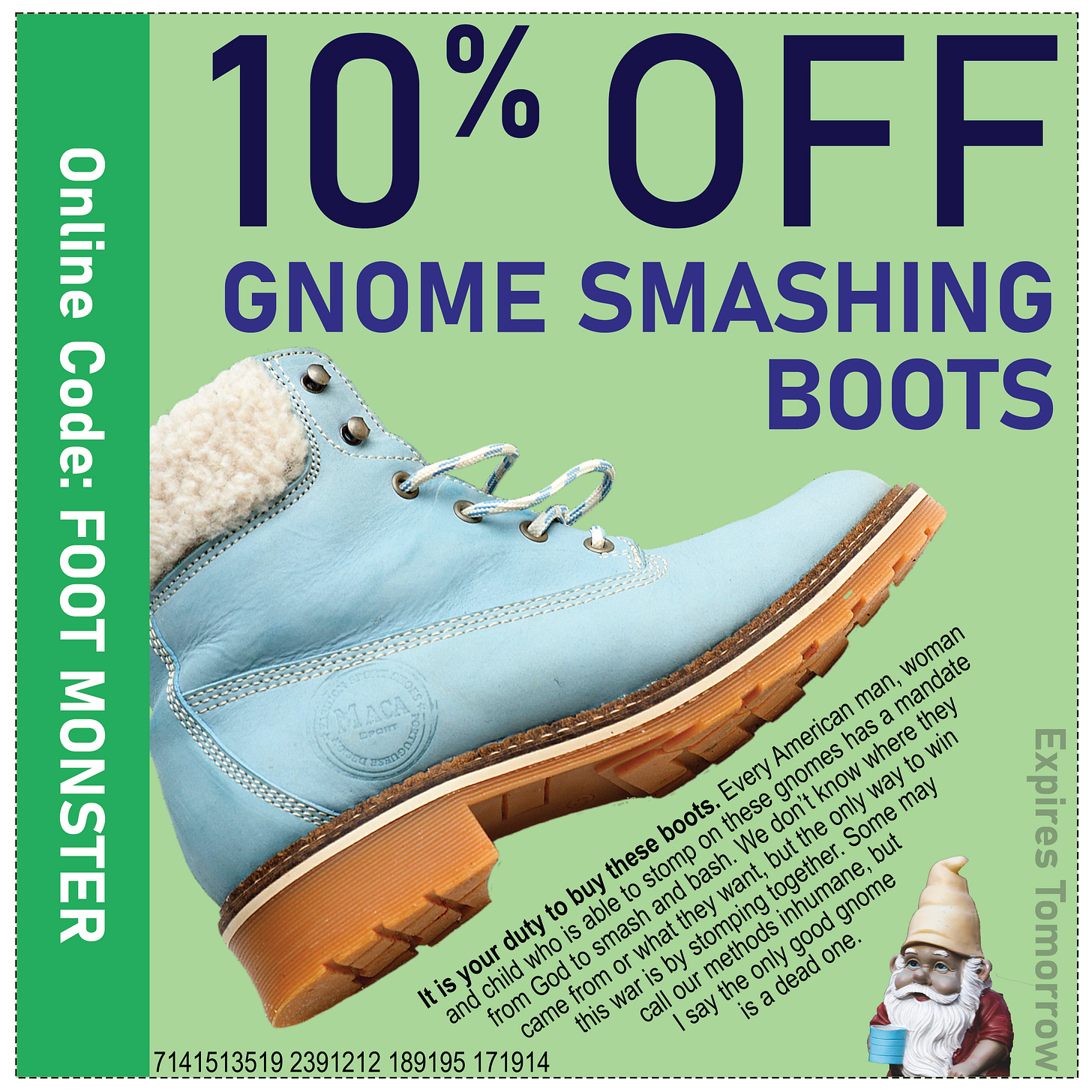
![[ARTIST] Adriane Tsai](https://substackcdn.com/image/fetch/$s_!5tYm!,w_1300,h_650,c_fill,f_auto,q_auto:good,fl_progressive:steep,g_auto/https%3A%2F%2Fsubstack-post-media.s3.amazonaws.com%2Fpublic%2Fimages%2F0292a32f-f33b-4fc0-86c8-242b5dd4b93a_5100x3300.jpeg)
Thanks so much for your time folks! It was great to talk to you!